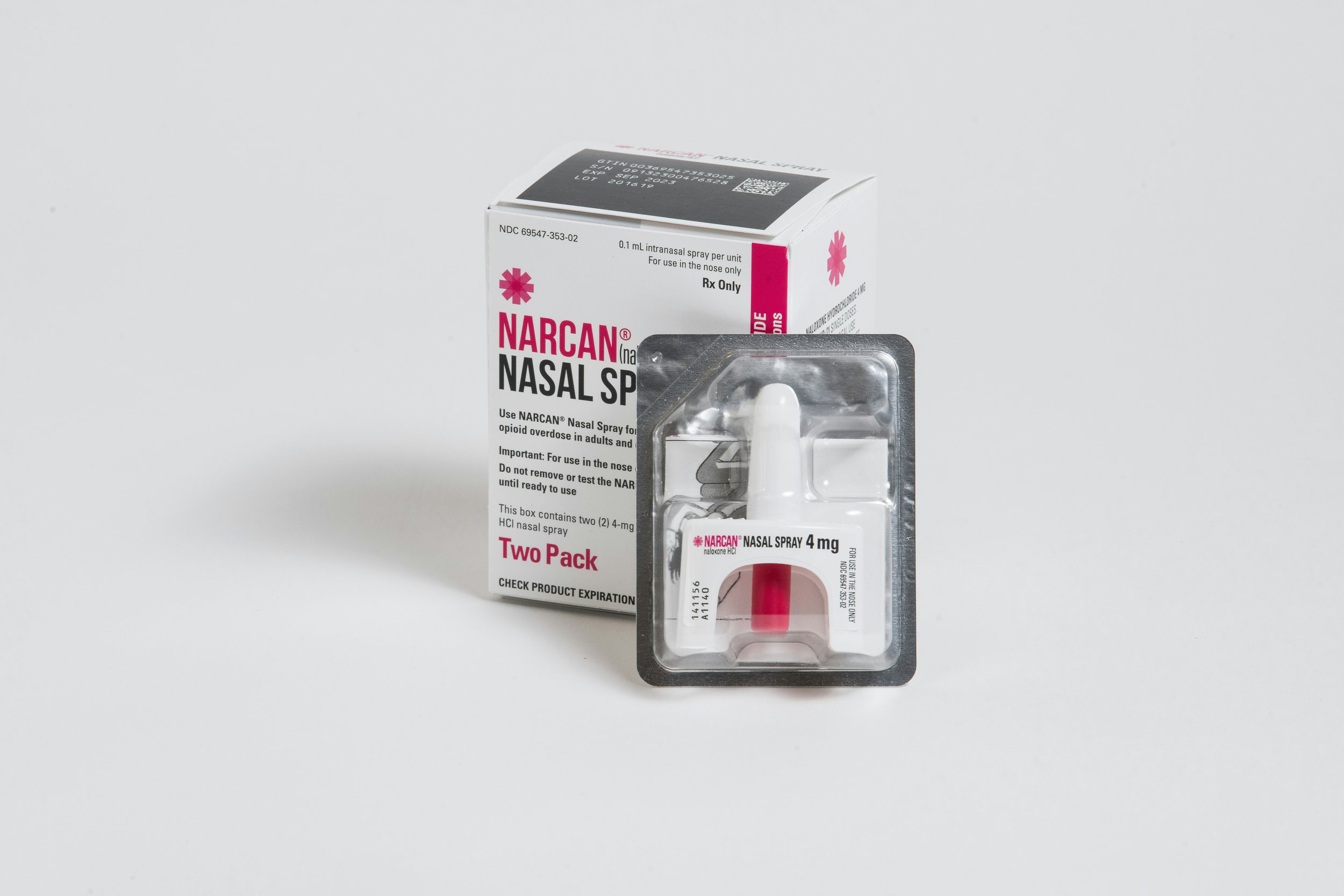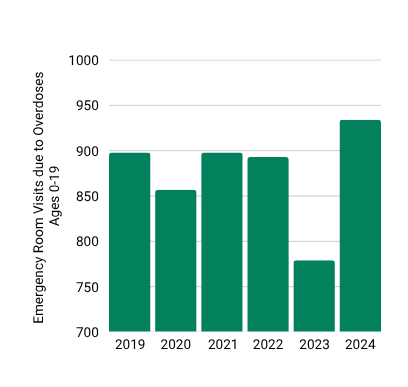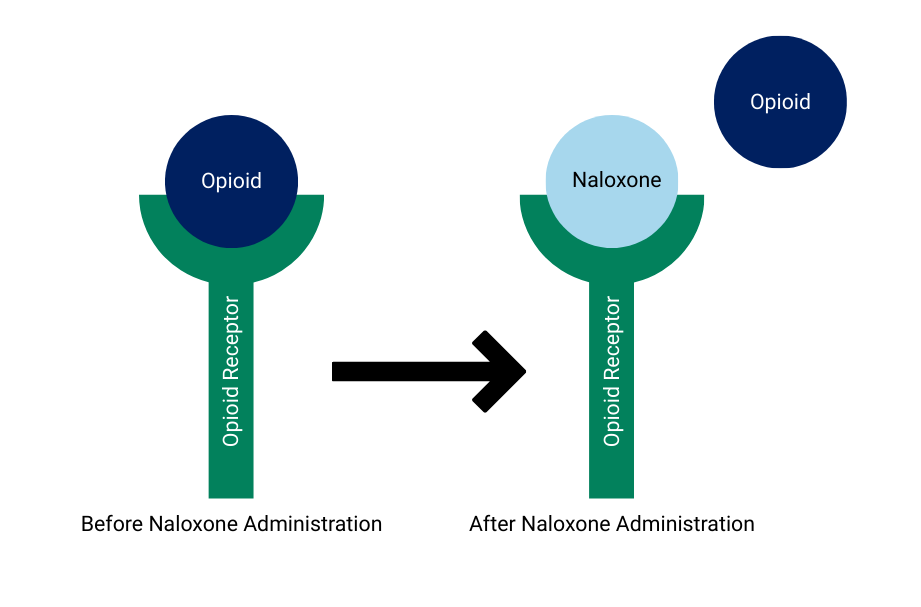
Access to Naloxone in West Virginia Schools
This Science & Technology Note provides statistics on opioid overdoses in West Virginia’s children, information on the lifesaving drug naloxone and its use in West Virginia’s schools, and policies that other states have implemented to provide naloxone to schools.
Research Highlights
Opioids are the most common cause of overdose death in children.
Naloxone is an extremely effective opioid overdose reversal medication.
34 out of 55 counties have chosen to stock naloxone in at least some of their schools. 4 school naloxone kits were used in the 2022-2023 school year.
Some states require schools to stock naloxone in an effort to reduce overdose deaths.
West Virginia is often considered to be at the center of America’s opioid epidemic. In 2021, 15 West Virginians aged 0-19 died from a drug overdose. This Science & Technology note provides statistics on opioid overdoses in children, explains how naloxone works, and discusses policies related to naloxone access in West Virginia schools.
Opioid Overdoses in Children
West Virginia experiences the highest rate of overdose death in the United States. The majority of overdoses, including among children, are caused by opioids. Opioids are a type of drug that reduce pain, but not all pain medications are opioids. Overdoses can occur from legally prescribed or illicit drugs, but the number of overdoses that occur as a result of prescription opioids has been dropping since 2016. About 50% of pediatric opioid prescriptions written in 2019 were considered “high risk”, based on dosage, length of prescription, and other factors. Only 10% of teens who die from an overdose have a history of substance abuse, and ~ 15% have experienced a previous overdose.
The total number of people in the United States using opioids is increasing.. The overdose death rate in US children ages 14-18 more than doubled between 2019 and 2021. Additionally, between 2023 and 2024, the number of children ages 12-17 reporting illicit drug use increased. An increase in child opioid use was also observed in West Virginia. 70% of the 4,635 total overdose deaths in West Virginia between 2018 and 2021 involved fentanyl, a powerful opioid. This includes the deaths of 51 children. Overdoses in children can occur at school, leading some schools to stock naloxone in an effort to intervene in these cases.
2024 saw the highest number of pediatric emergency room visits due to overdoses in the previous six years. Adapted from West Virginia Office of Drug Control Policy Overdose Dashboard
Naloxone for Opioid Reversal
When someone experiences an opioid overdose, their heart rate and breathing can slow or stop. Naloxone reverses these effects, often causing a spontaneous return of breathing. To be the most effective, naloxone should be administered as soon as possible after an opioid overdose. Naloxone is extremely effective as an immediate treatment for opioid overdose, as increased naloxone access has been linked to a 14% reduction in deaths from opioid overdose.
Naloxone, the generic form of Narcan®, can reverse the effects of an opioid overdose. Opioids bind to specific receptors in the brain and send out signals to reduce pain and cause a “high” feeling. Naloxone binds to the same receptors, but more strongly than opioids do. This allows naloxone to remove opioids from the receptors. Although naloxone and opioids bind to the same receptors, naloxone does not produce the same signals as opioids and simply blocks them from binding to the receptors. Naloxone does not stay in the brain as long as opioids, so sometimes the naloxone can be used up while opioids are still active, leading the opioids to reattach to their receptors and overdose symptoms to recur.
Naloxone works by replacing the opioid drug that is attached to receptors in the brain. Naloxone does not send the same signals as opiods, allowing an overdose to be reversed. Source: Adapted from How Does Narcan Work
Naloxone does not negatively affect an individual who is not experiencing an opioid overdose. Some people have ethical concerns about naloxone access, as they may think that naloxone access encourages opioid use. However, data shows that increased naloxone access did not increase nonmedical opioid use.
Financial and logistical barriers often prove detrimental to naloxone access. Although there are multiple ways to obtain free or low-cost naloxone in West Virginia, including via mail or through various community organizations, the average price to purchase naloxone is $45. Naloxone was approved by the FDA for over-the-counter availability across the nation in 2023. Young people, those without transportation, and individuals living in rural areas often face additional difficulties with naloxone access.
Financial and logistical barriers often prove detrimental to naloxone access. Although there are multiple ways to obtain free or low-cost naloxone in West Virginia, including via mail or through various community organizations, the average price to purchase naloxone is $45. Naloxone was approved by the FDA for over-the-counter availability across the nation in 2023. Young people, those without transportation, and individuals living in rural areas often face additional difficulties with naloxone access.
Naloxone in West Virginia Schools
Since 2017 and under current West Virginia law, schools have the option to obtain and keep naloxone, but are not required to. If a school elects to keep naloxone, it must be kept in a secure location inaccessible to students. A school nurse or other trained school personnel may administer the naloxone. Schools must also notify parents if naloxone is used on their child. However, schools are responsible for obtaining and maintaining their own naloxone. The University of Charleston School of Pharmacy runs a naloxone distribution program, as do various nonprofits in the state.
The West Virginia Department of Education and Office of Drug Control Policy published a “Naloxone Guide for School Nurses”, which contains a policy template for county boards of education, information on recognizing and treating opioid overdoses, resources that may be helpful for opioid users, instructions on how to obtain naloxone, and information on legal protections for naloxone use. As of July 31, 2025, 34 West Virginia counties have almost 600 naloxone kits in schools. Schools are required to report the use of naloxone kits to the Superintendent of Schools, who then presents the data to the Joint Committee on Government and Finance. 4 naloxone kits were used in the 2022-2023 school year.
West Virginia is also making efforts to educate students about opioids and naloxone. In 2024, the West Virginia Legislature passed HB 5540 (Laken’s Law). This law requires grades 6-12 to have substance abuse education, including specific education on fentanyl and naloxone use.
Policy Options
The majority of states, including West Virginia, have some type of law regulating access to naloxone in the school setting. 20 states have a similar policy to West Virginia’s existing regulations, where schools are allowed to stock naloxone, but are not required to. 8 states require all public high schools to keep naloxone on site. In 2023, Texas began to require all schools serving students in grades 6-12 to stock opioid antagonists. Texas also recommends training all school staff to recognize opioid overdose and administer naloxone. Arkansas requires all public high schools and higher education institutions to keep naloxone kits. School nurses and school resource officers in Arkansas are required to carry naloxone, and additional kits are co-located with AEDs. Alternatively, some states only require certain schools to stock naloxone. For example, Washington requires school districts with more than 2,000 students to stock naloxone in each high school, while smaller districts are exempt. West Virginia could alter its current policy to require all schools to have naloxone, all schools serving specific grade levels to stock naloxone, or schools of a certain size to keep naloxone.
Other states don’t require schools to stock naloxone, but ensure schools that want to are able to. Colorado does not require schools to stock naloxone, but provides free naloxone to schools who request it through the Colorado Naloxone Bulk Fund. In 2022, the Colorado General Assembly provided a $20 million appropriation to the fund. One option for West Virginia could be to use a portion of the opioid settlement fund money to provide naloxone to schools.
This Science and Technology Note was prepared by Madison Flory, PhD, West Virginia Science & Technology Policy Fellow and Joshua Saldanha on behalf of the West Virginia Science and Technology Policy (WV STeP) Initiative. The WV STeP Initiative provides nonpartisan research and information to members of the West Virginia Legislature. This Note is intended for informational purposes only and does not indicate support or opposition to a particular bill or policy approach. Please contact info@wvstep.org for more information.

